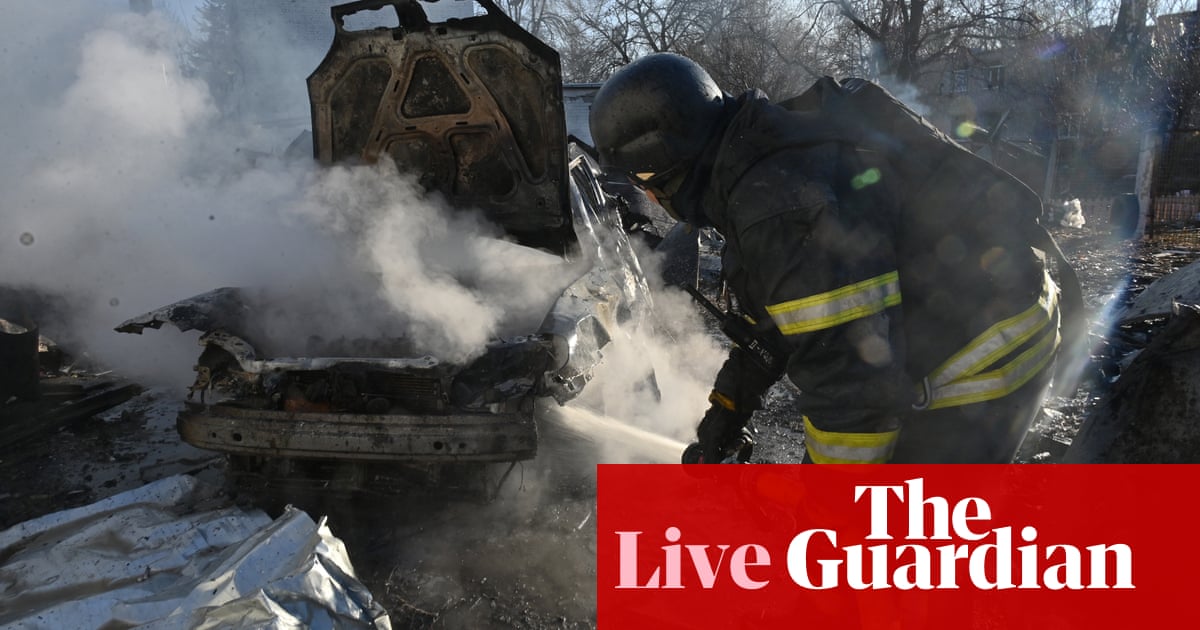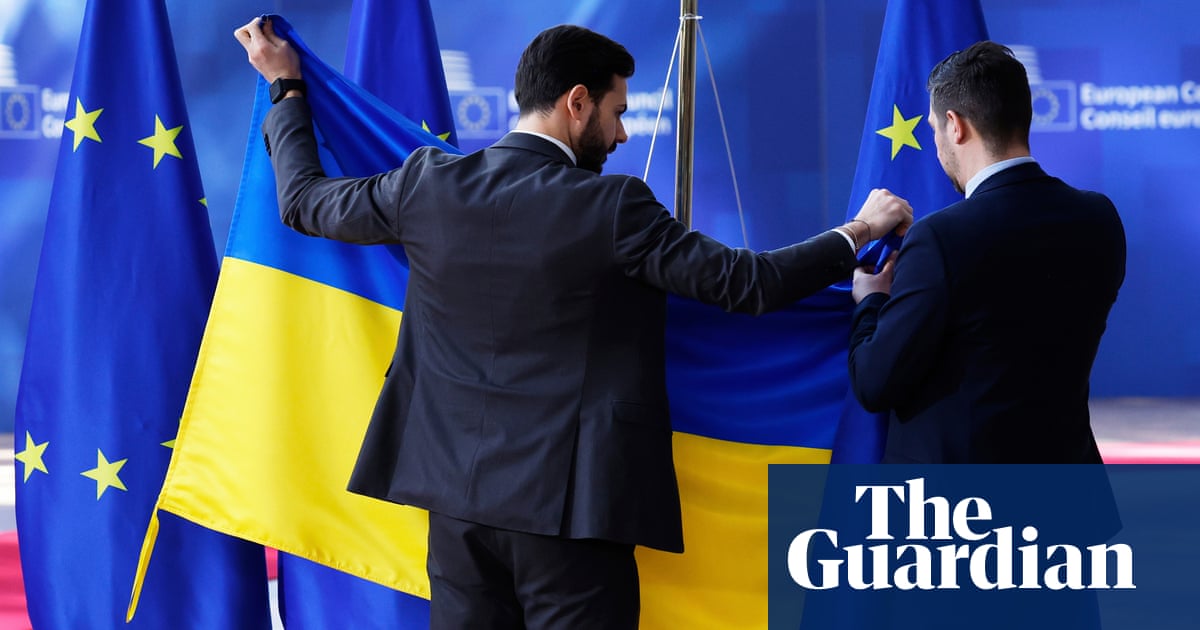Helping Ukraine Is Europe’s Job Now

Europeans should pay Donald Trump the compliment of believing what he does and says, not what they desperately want to hear. He has clearly indicated that he wants the United States out of the Ukraine war as soon as possible. Both the president-elect and his most important supporter, Elon Musk, have reportedly been in frequent contact with Russian President Vladimir Putin. Vice President–elect J. D. Vance has outlined a “peace” deal with Ukraine that would serve Russian interests. American aid to Ukraine, which has been vital to the beleaguered country’s ability to resist Russia’s ongoing invasion, could stop not long after Trump is inaugurated. European nations must accept this reality and make their own plans—not just to support Ukraine in its existential fight but also to protect their own security as America’s global role shrinks.
Perhaps the best that Ukraine and its supporters can hope for is that Trump doesn’t walk away from NATO and allows European states to purchase U.S. weapons for Ukraine. This minimal position might represent a victory of sorts for Europeans who believe in democracy and the transatlantic alliance—but it would still signal a historical break. The United States will likely stop leading the global opposition to Russian aggression, and perhaps stop caring about the results of the largest war in Europe since 1945. Indeed, the president of the United States will be closer personally to the head of Europe’s largest dictatorship than to any of the continent’s democratically elected leaders.
Those leaders should have started preparing for another Trump presidency long ago. They had been warned. But for the past year many Europeans have been surviving on hope. Surely the American people won’t vote for Trump, particularly after the January 6 insurrection. The prudent assumption now is that the U.S. will no longer guarantee Europe’s security from Russia and other threats. Leaders should envisage a world where NATO no longer exists—or where the United States is no longer the leading force in the alliance.
In some ways, this is more scary psychologically than in practice. Europe—which is to say, the democratic countries enmeshed in institutions such as NATO and the European Union—has the economic and technological resources to underwrite a serious defense effort. It has a large and educated enough population to staff modern armed forces. It also has some strong and growing military capabilities. For instance, European states either have received or will receive in the coming years as many as 600 F-35 fighters—the most advanced and capable aircraft in the world. Such a force could dominate the skies against a clearly inferior Russian opponent.
Yet Europe also has many weaknesses. It has developed a shockingly large number of military-hardware systems but then only builds a small number of each. This boutique way of addressing military capability has been exacerbated by a weakness in investing in logistics and a limited ability to produce supplies and equipment quickly and reliably enough to sustain a war effort.
Russia’s full-scale invasion of Ukraine in early 2022 prompted a lot of dramatic talk. The continent had supposedly reached a turning point—a Zeitenwende, in the phrase of German Chancellor Olaf Scholz. But Europe has frittered away much of the past two and a half years, making the smallest and most incremental of changes even as a grotesque war raged to the east; even as Russian forces regularly attacked civilian targets; even as military technology, particularly relating to drone systems, raced forward. European defense spending has only crept up. Even now, a number of NATO states fail to meet the alliance’s agreed-upon target of spending at least 2 percent of their GDP on defense. The United States, even after a significant decline in defense spending after the War on Terror, spends 3.5 percent. Two percent—a standard set in 2014, when European states felt far more secure than they currently do—won’t cut it now.
Scaling up defense systems quickly will be difficult, but it is essential. In the meantime, the highest priority from the European perspective should be to keep Ukraine supplied and in the fight in case Trump pulls the plug on American military support for Kyiv. Europe can provide more ammunition and more ground-based air-defense equipment. It can give Ukraine long-range weapons, such as German-made Taurus cruise missiles.
Just as important, European democracies can work with Ukraine to upgrade and expand its drone capacity—and in doing so help establish that industry elsewhere in Europe. Europe and even the United States have much to learn from Ukraine about unmanned aerial vehicles. The innovation cycle in Ukraine is quick; major advances take mere months or even just weeks. In this dynamic environment, where homegrown Ukrainian technology looms so large, few Western systems are of much use if sent whole. What Ukraine needs is the ability to mass-produce the drone technology that its engineers develop, working with European partners. That will require specialized components and equipment—and Europe can help with that.
If the United States abandons Ukraine, European states can start taking steps that the Biden administration, in its excess of caution, did not allow. The four most powerful states in Europe today—the U.K., France, Germany, and Poland—could give Ukraine their blessing to attack any Russian military targets. After all, Russia is using its weapons—and those provided by its allies, such as Iran, to attack targets in Ukraine; the American refusal to let Ukraine use Western systems against military infrastructure in Russia itself makes no sense.
European countries could go still further, by openly deploying their forces at least to western Ukraine. They could take over air-defense responsibilities—shooting down Russian missiles and drones without directly killing Russian soldiers. European forces could also openly assist in training Ukrainian forces in Ukraine and assist with air defense and training. Moves like these will reassure the Ukrainian people that they are not alone if the U.S. withdraws—and that their future is in Europe.
To be sure, the continent suffers from a collective-action problem. French President Emmanuel Macron asked this week, “The question we, as Europeans, must ask ourselves, is: Are we ready to defend the interests of Europeans?” Detractors might ask why he was raising the issue only now. In Germany, Scholz’s government appears on the verge of collapse. Even if it survives, it likely lacks the boldness to move decisively to help Ukraine.
And yet the greatest obstacle is a mental one. After decades of expecting the United States to act wisely and forcefully in defense of the broader democratic world, Europe needs to start thinking and acting on its own and in its own interests. Trump’s return means that things previously inconceivable must be faced. And in Ukraine, a new Europe can be born.
Related
Zelenskyy reiterates call for air truce after huge Russian attack…
We need Russia to stop attacks, Zelenskyy says, backing calls for truce in air, at seaUkrainian president Volodymyr Zelenskyy has responded to overnight attacks
Europe scrambles to rearm as Trump threatens security guarantees and…
CNN — European leaders have vowed to rearm the continent at historic emergency talks h
Russia launches ‘massive’ attack on Ukraine after Europe rushes to…
Ukraine's energy and gas infrastructure came "under massive missile and drone shelling" by Russia on Friday, a Ukrainian minister said."The energy and gas infra
American severance may be averted, but Europe’s leaders must fear…
With a mixture of regret, laced with incredulity, European leaders gathered in Brussels to marshal their forces for a power struggle not with Russia, but with t












